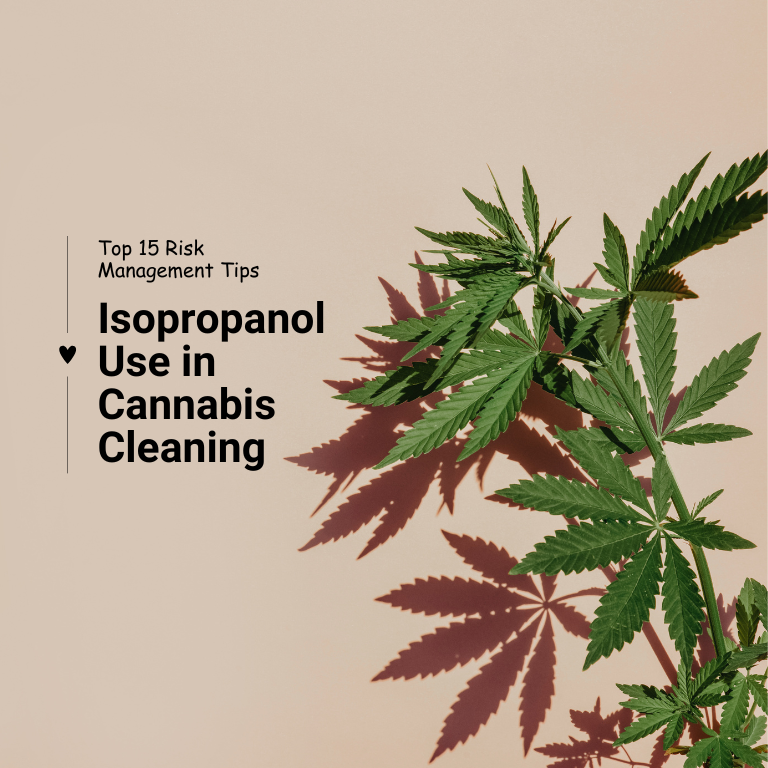OSHA-NSC Pact: Understanding Its Potential Impacts on the Cannabis Industry
The Occupational Safety and Health Administration (OSHA) and the National Safety Council (NSC) have formed a strategic alliance aimed at improving workplace safety across various industries. While the partnership is not cannabis-specific, its implications for the rapidly growing cannabis sector are significant. As cannabis businesses expand operations, they face heightened scrutiny regarding worker safety and compliance. This article explores the potential impacts of the OSHA-NSC pact on the cannabis industry and the steps businesses can take to align with evolving safety standards.
OSHA and NSC Alliance: A Strategic Collaboration for Workplace Safety
The OSHA-NSC alliance is designed to enhance occupational health and safety through education, training, and compliance programs. By leveraging their collective expertise, OSHA and NSC aim to create safer workplaces, reduce workplace injuries, and promote a culture of safety.
Key Objectives of the Alliance
Develop safety training and resources for high-risk industries.
Promote awareness of workplace hazards and preventative measures.
Foster a culture of safety across diverse sectors, including emerging industries like cannabis.
While the cannabis industry is not explicitly mentioned, its unique challenges make it a focal point for occupational safety enhancements.
The Cannabis Industry: A Growing Sector with Unique Safety Challenges
The cannabis industry has grown exponentially, with legal markets now spanning multiple states. However, this rapid expansion has brought unique safety challenges, including exposure to hazardous chemicals, ergonomic risks, and workplace violence in retail settings.
Key Workplace Safety Concerns in Cannabis
Cultivation Hazards: Employees in grow facilities face risks from pesticide exposure, mold, and repetitive motion injuries.
Manufacturing and Processing Risks: Extraction processes can involve flammable chemicals, posing fire and explosion risks.
Retail Security Issues: Cannabis dispensaries are vulnerable to theft, creating potential for workplace violence.
The OSHA-NSC pact could play a critical role in addressing these challenges through targeted safety programs and resources.
How OSHA Standards Currently Apply to the Cannabis Industry
OSHA standards apply to all industries, including cannabis. However, the cannabis industry faces unique compliance challenges due to its status as a federally illegal substance. Businesses must navigate a complex web of federal, state, and local regulations to ensure worker safety.
Commonly Applied OSHA Standards in Cannabis
Hazard Communication (HAZCOM): Ensures proper labeling and communication about hazardous chemicals used in cultivation and extraction.
Personal Protective Equipment (PPE): Requires employers to provide PPE for tasks involving chemical exposure or physical hazards.
Emergency Action Plans (EAPs): Mandates protocols for handling emergencies, including fires or chemical spills.
The OSHA-NSC alliance could help cannabis businesses better understand and implement these standards.
Potential Impacts of the OSHA-NSC Pact on Cannabis Businesses
The OSHA-NSC partnership has the potential to influence the cannabis industry in several ways, from heightened enforcement to improved safety resources.
Increased Regulatory Scrutiny
As OSHA and NSC collaborate to enhance safety, cannabis businesses could face increased inspections and enforcement actions. Companies must proactively identify and address workplace hazards to avoid penalties.
Access to Industry-Specific Safety Training
The partnership may lead to the development of cannabis-specific safety training programs, addressing risks unique to cultivation, processing, and retail.
Improved Worker Safety Culture
By aligning with OSHA-NSC guidelines, cannabis businesses can foster a culture of safety, boosting employee morale and productivity while reducing injury rates.
Cost Implications for Compliance
Investing in compliance measures, such as training and equipment upgrades, could increase operational costs. However, these investments are critical to avoiding costly fines and improving workplace safety.
Proactive Steps for Cannabis Businesses to Align with Safety Standards
To stay ahead of potential changes stemming from the OSHA-NSC pact, cannabis businesses should take proactive measures to enhance workplace safety.
Conduct Comprehensive Hazard Assessments
Identify potential hazards in cultivation, processing, and retail environments.
Document findings and implement control measures to mitigate risks.
Develop and Update Safety Policies
Create policies that align with OSHA standards and address industry-specific risks.
Regularly review and update policies to reflect changes in regulations and workplace conditions.
Invest in Employee Training
Provide training on hazard communication, emergency response, and proper use of PPE.
Offer specialized training for high-risk tasks, such as chemical handling and extraction.
Engage with Industry-Specific Resources
Monitor updates from OSHA and NSC related to cannabis industry safety.
Participate in industry forums and training sessions to stay informed about best practices.
The Role of NSC in Enhancing Cannabis Workplace Safety
The National Safety Council’s involvement in the OSHA alliance brings added expertise and resources to address workplace safety challenges. As a leader in safety advocacy, the NSC can provide cannabis businesses with valuable tools and insights.
Key NSC Contributions
Development of industry-specific safety resources.
Advocacy for improved workplace safety standards.
Collaboration with cannabis industry stakeholders to address unique risks.
Balancing Safety with Operational Growth in the Cannabis Sector
As the cannabis industry continues to grow, businesses must balance safety and compliance with the need for operational efficiency. The OSHA-NSC pact provides an opportunity for the cannabis sector to elevate its safety standards and establish itself as a responsible and sustainable industry.
Benefits of Prioritizing Safety
Reduced workplace injuries and associated costs.
Enhanced reputation as a safe and ethical employer.
Improved employee retention and satisfaction.
Preparing for the Future: What Cannabis Businesses Should Expect
The OSHA-NSC pact signals a broader push for workplace safety across all industries, including cannabis. Businesses should expect:
Increased emphasis on compliance with OSHA standards.
Development of cannabis-specific safety guidelines.
Greater collaboration between regulators and the cannabis industry.
By staying proactive and investing in safety, cannabis businesses can not only meet regulatory requirements but also gain a competitive edge in a rapidly evolving market.
The OSHA-NSC alliance marks a significant step toward improving workplace safety across diverse industries, including cannabis. For cannabis businesses, this partnership offers an opportunity to address unique safety challenges, enhance compliance, and build a safer, more sustainable future.













